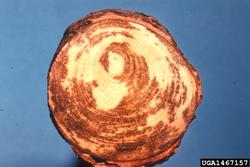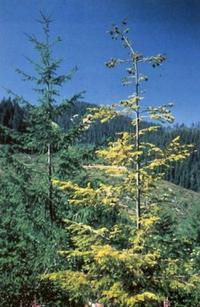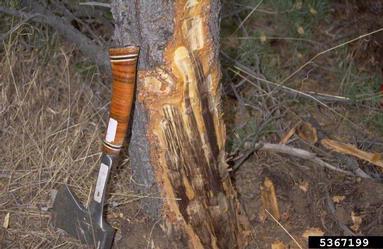Black Stain Root Disease (Leptographium wagneri)
Trees Affected


Common: Douglas-fir, ponderosa pine, Jeffrey pine
Occasional: Lodgepole pine, knobcone pine, western white pine, sugar pine, western hemlock, mountain hemlock
Summary

Local Distribution
Black stain root disease is present in a variety of locations throughout the north coast. Although the following list is not exhaustive, this disease has been observed at the following locations:
- Along highway 299 near Ellis summit
- In the hills around Ferndale
- Jackson State Forest
Management Strategies

Pests and Pathogens with Similar Symptoms
Armillaria Root Disease: Both of these pathogens may cause top down decline and other symptoms associated with root disease. However, Armillaria root disease can be distinguished from most other root diseases (including black stain root disease) by the presence of black root-like cords called rhizomorphs under the bark of the affected tree. Additionally, Armillaria root disease produces a white, spongy rot and does not produce the signature vertical black staining of black stain root disease. However, it is possible for these pathogens to co-occur at a site, so the presence of one does not rule out the possibility of the other.
Further Reading
Overview and management:
https://www.fs.usda.gov/Internet/FSE_DOCUMENTS/stelprdb5187236.pdf
Overview and symptoms (with pictures):
https://www.fs.fed.us/foresthealth/docs/fidls/FIDL-145-BlackStainRootDisease.pdf
